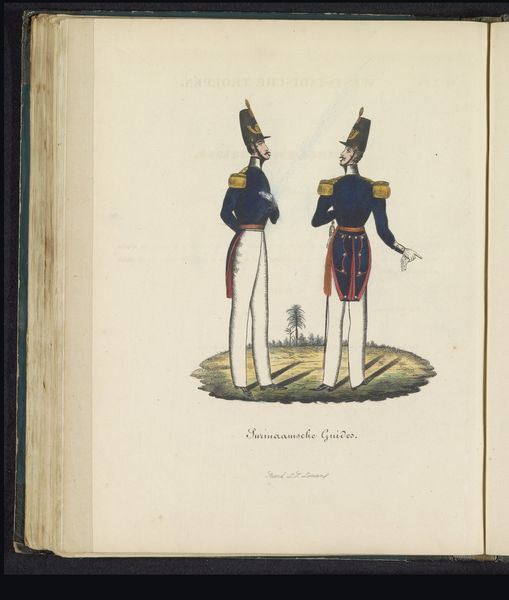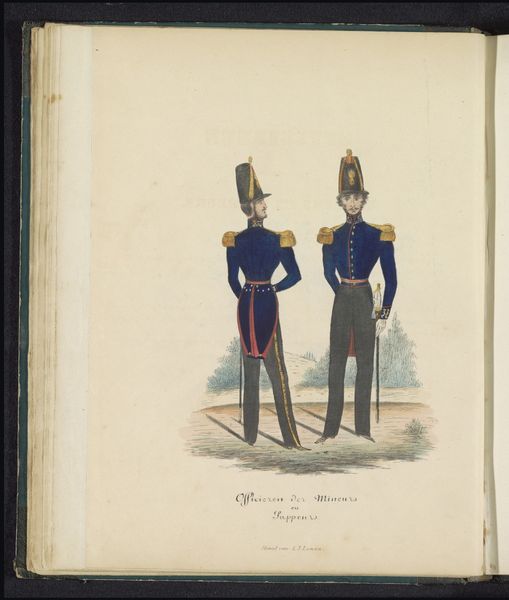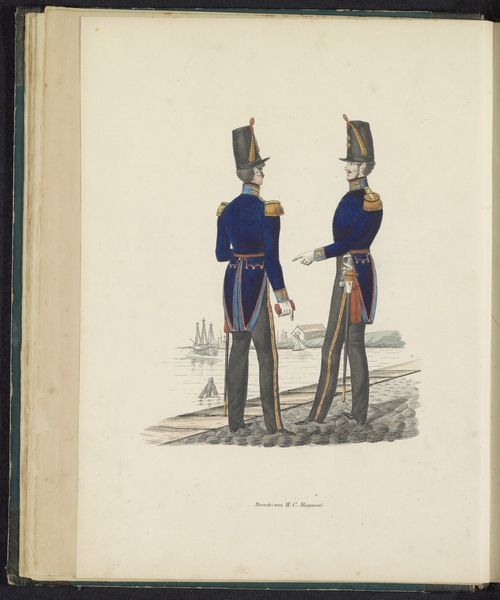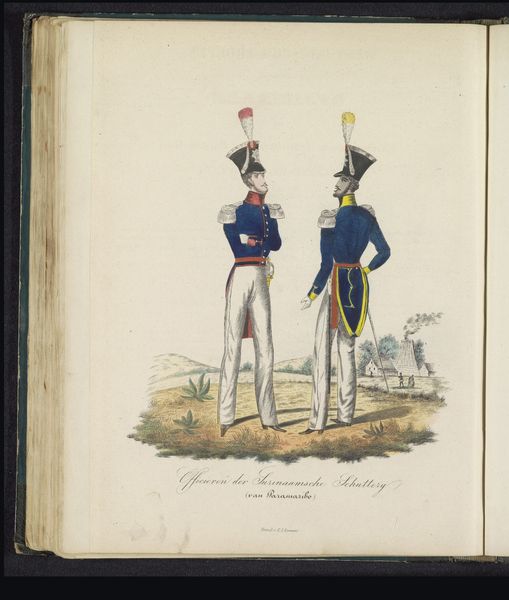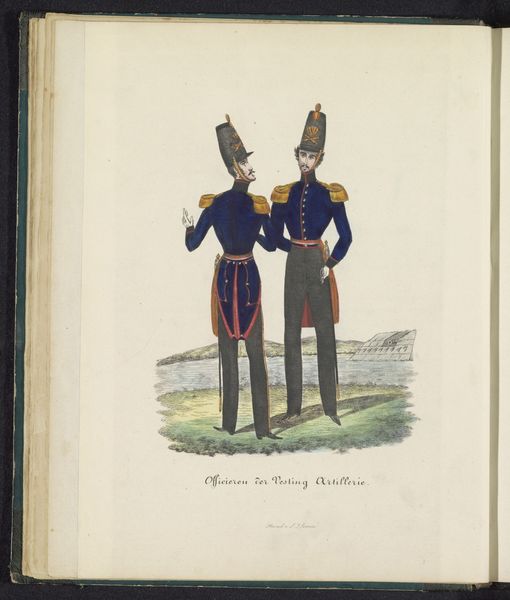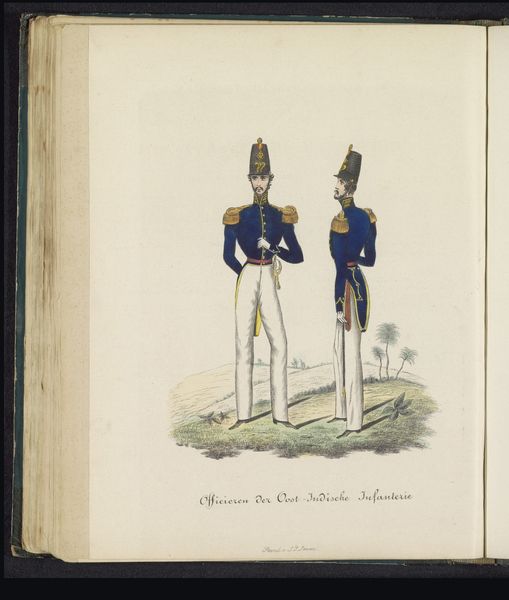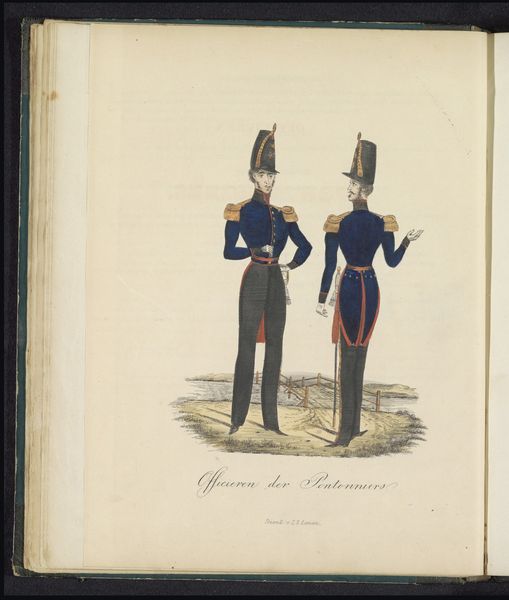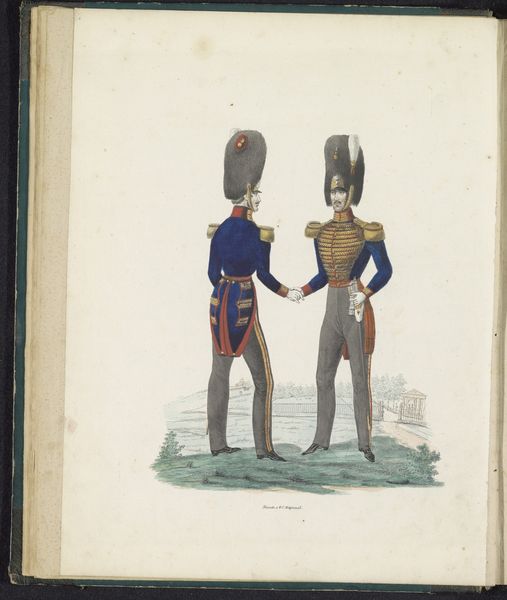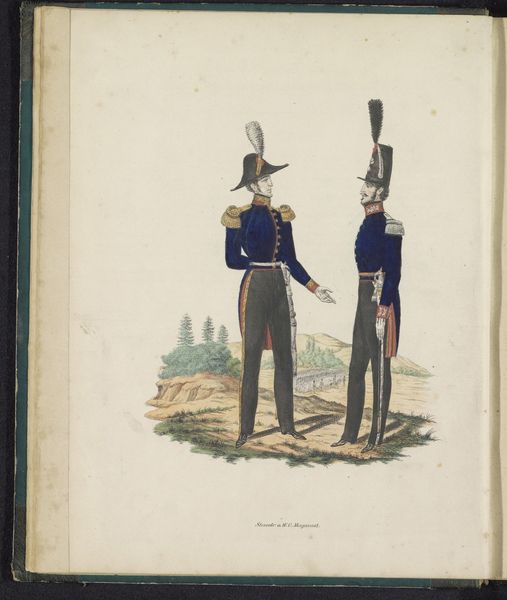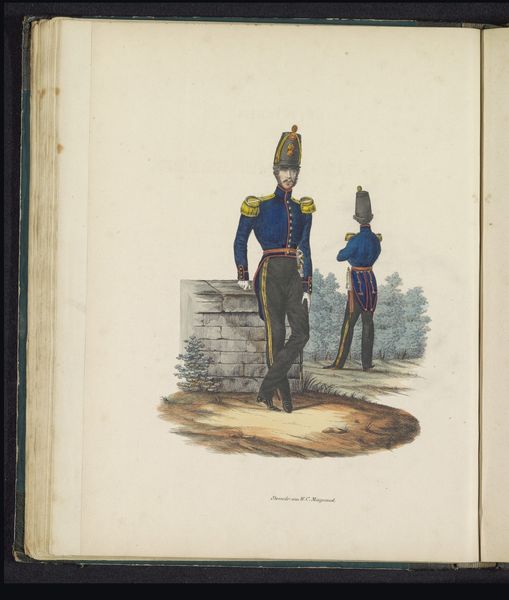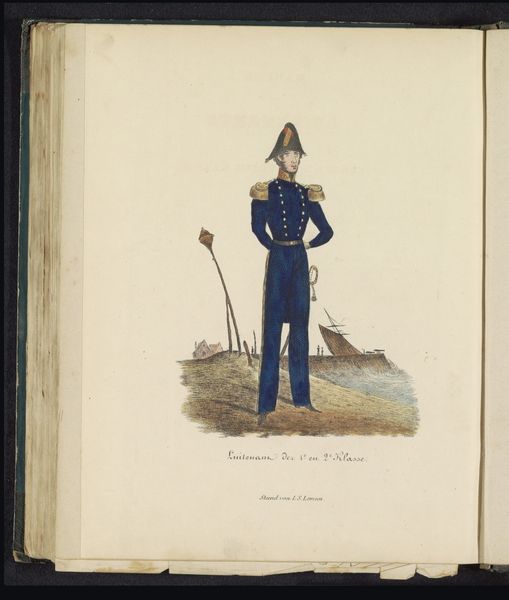
Uniform van de officieren van de artillerie van de West-Indische troepen, 1845 1845
0:00
0:00
watercolor
#
portrait
#
watercolor
#
watercolour illustration
#
genre-painting
#
academic-art
Dimensions: height 270 mm, width 200 mm
Copyright: Rijks Museum: Open Domain
Editor: This watercolor illustration by Louis Salomon Leman, created in 1845, showcases the "Uniform of the Officers of the Artillery of the West Indian Troops." There’s a striking formality in the pose of the officers. How should we interpret this depiction? Curator: Formality is a great observation. This image, and others like it, were often tools of colonial power. Consider the specific title "West-Indische troepen." Who are these troops? Whose interests do they serve? Uniforms like these are potent symbols of authority, projecting an image of control and order onto the colonised landscape. Editor: So the artist is subtly commenting on colonialism? Curator: Perhaps. Or maybe simply complicit in it. Academic art of this period was deeply enmeshed with the structures of power. Even a seemingly straightforward depiction of uniforms can be read as reinforcing those structures. Consider how the neatness of the rendering contrasts with the messy realities of colonial violence. Who benefits from that visual order? And what narratives are suppressed by it? Editor: I see what you mean. The crisp lines and polished look almost sanitize the reality of military presence. What about the fact that it's watercolor, such a delicate medium? Curator: The choice of watercolour itself could be interpreted. Its seeming fragility juxtaposed against the implied strength of the military creates an interesting tension. Was it meant to emphasize a specific refinement or… delicacy of the officers? Or even to hide the true nature of their tasks? These visual choices carry ideological weight, whether consciously intended or not. Editor: I hadn't thought about the medium in that way before. I was focusing solely on what was depicted, not how it was depicted. Curator: Exactly! Art is never neutral. This piece gives us insight into how visual culture served colonial agendas, offering a glimpse into the complexities of power, representation, and identity in the 19th century. It's a reminder that art historical analysis should push past the surface and into social power structures. Editor: I'm going to look at nineteenth-century military paintings very differently from now on!
Comments
No comments
Be the first to comment and join the conversation on the ultimate creative platform.

